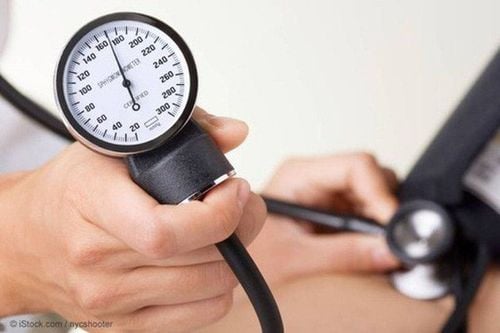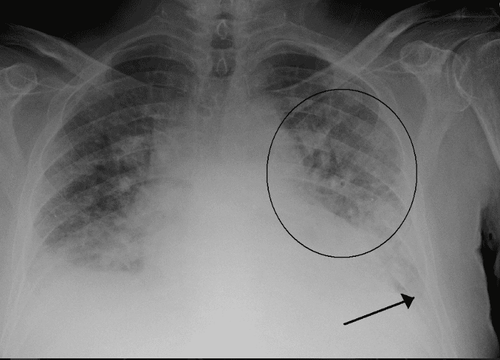This is an automatically translated article.
Acute pulmonary edema is a common medical emergency in obstetric practice. Acute obstetric pulmonary edema often occurs in patients with heart disease, high blood pressure, kidney disease, or infections during pregnancy.1. Circulatory changes during pregnancy
Right from the moment the baby is born, the mother begins to have the phenomenon of water retention in the body. Water is retained and distributed evenly in the soft tissue. In particular, this phenomenon increases significantly in the last 10 weeks of pregnancy until labor, and after birth, it will decrease suddenly.
Plasma volume increases rapidly, increases most clearly from 6 to 34 weeks and remains stable until delivery. Plasma volume returned to normal after 6 weeks postpartum.
A pregnant woman's heart rate increases with gestational age, increasing by about 15% on average. Cardiac output is increased due to high oxygen consumption demands for both mother, fetus and adnexa. The circulation rate is also increased due to the connection between the maternal arterial system and the placental veins. On the other hand, the position of the heart changes due to the large uterus, pushing the diaphragm upward, causing the heart to move from the longitudinal axis to the horizontal position. This causes the blood vessels from the heart to slightly bend, as a result, the heart works in more difficult conditions than before pregnancy.
2. Factors affecting acute pulmonary edema in pregnant women

Bệnh tim ảnh hưởng đến tình trạng phù phổi cấp ở bà bầu
Number of previous births People who give birth for the first time are less likely to have the disease than those who have multiple births.
The older the gestational age, the more cardiovascular events in obstetrics occur.
Gestational hypertension With hypertensive diseases in pregnancy, especially severe preeclampsia, acute pulmonary edema attacks will have more favorable conditions to appear.
In addition, acute pulmonary edema is also seen in cases of anemia, malnutrition, infection, kidney disease, drug poisoning or poisoning with other toxins...
3. Manifestations of acute pulmonary edema in pregnant women
3.1 Typical manifestations are exacerbations, rampant nature with the following symptoms:
Pregnant women with acute pulmonary edema will suddenly have difficulty breathing, breathing rate increases with a lot of cough. Lips and fingertips, purple feet. The spirit of panic, fear, feeling of chest tightness, cold sweat of limbs. Tachycardia, heart rate > 100 beats/min. Blood pressure often clamps or increases blood pressure in preeclampsia, kidney diseases. However, it is possible to experience hypotension due to cardiovascular collapse, this is a serious condition that proves that the heart does not work to compensate in time and leads to acute respiratory failure. 3.2 Subacute form Also present with sudden shortness of breath, sensation of itching in the neck. This disease is more common. In addition, we may encounter a fulminant form that will progress very quickly within a few minutes. However, any clinical form of acute pulmonary edema has an equally poor prognosis.
Note, acute pulmonary edema will often have warning symptoms for several hours or longer. If these signs are detected early, it will be very beneficial in treatment and can prevent the occurrence of pulmonary edema.
4. How to treat acute pulmonary edema?

Tiêm tĩnh mạch điều trị phù phổi cấp
5. Prophylaxis of acute pulmonary edema
Using pain relievers and sedatives during labor should choose drugs that do not make the heart beat faster. If possible, neuraxial anesthesia or regional anesthesia should be used for delivery. Adequate oxygen supply during labor and postpartum. Avoid excessive bleeding after giving birth. Limit the use of drugs that induce uterine contractions at this stage if there is no postpartum bleeding. Avoid cesarean section if there is no clear obstetric indication. Do not breastfeed when heart failure is too severe. Choosing an address to monitor and take care of your pregnancy health from the time you are pregnant to the time your baby is born is an important job and brings many benefits to both mother and baby. At Vinmec International General Hospital, currently offering a full package of Maternity services, with this service package, pregnant women and the whole family will be completely assured because Vinmec is always committed to providing the highest quality of service with both With love and devotion, the mother's pregnancy and birth journey becomes the most wonderful and happy thing.
Please dial HOTLINE for more information or register for an appointment HERE. Download MyVinmec app to make appointments faster and to manage your bookings easily.













